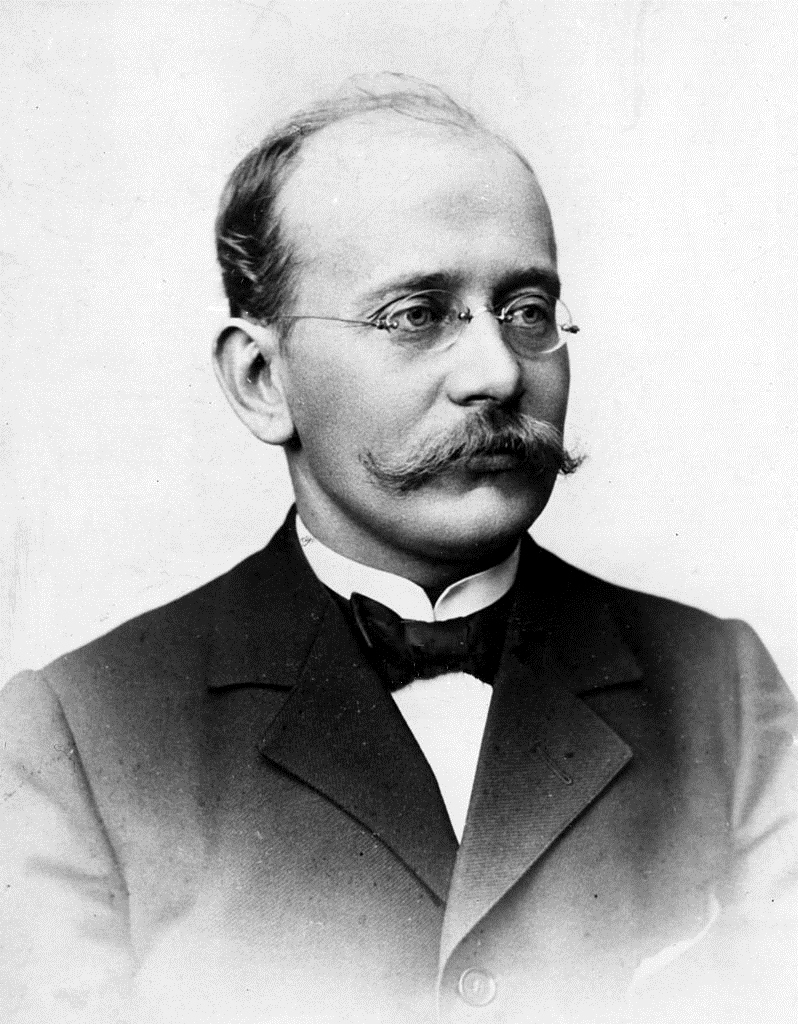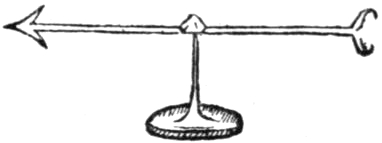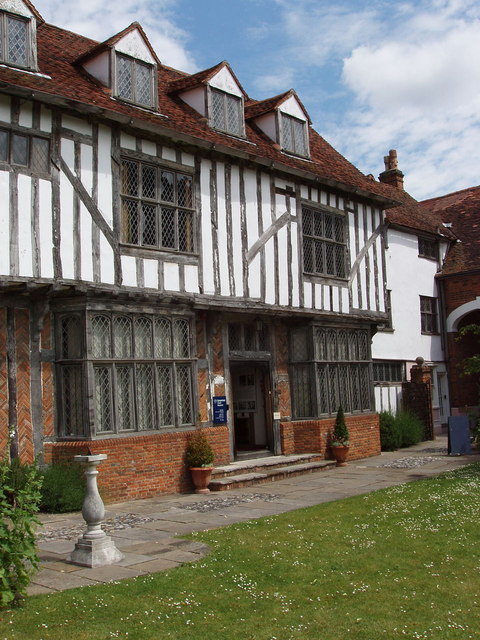|
Terrella
A terrella (Latin for "little earth") is a small magnetised model ball representing the Earth, that is thought to have been invented by the English physician William Gilbert while investigating magnetism, and further developed 300 years later by the Norwegian scientist and explorer Kristian Birkeland, while investigating the aurora. Terrellas have been used until the late 20th century to attempt to simulate the Earth's magnetosphere, but have now been replaced by computer simulations. William Gilbert's terrella William Gilbert, the royal physician to Queen Elizabeth I, devoted much of his time, energy and resources to the study of the Earth's magnetism. It had been known for centuries that a freely suspended compass needle pointed north. Earlier investigators (including Christopher Columbus) found that direction deviated somewhat from true north, and Robert Norman showed the force on the needle was not horizontal but slanted into the Earth. William Gilbert's explanation wa ... [...More Info...] [...Related Items...] OR: [Wikipedia] [Google] [Baidu] |
Kristian Birkeland
Kristian Olaf Bernhard Birkeland (13 December 1867 – 15 June 1917) was a Norwegian scientist. He is best remembered for his theories of atmospheric electric currents that elucidated the nature of the aurora borealis. In order to fund his research on the aurorae, he invented the electromagnetic cannon and the Birkeland–Eyde process of fixing nitrogen from the air. Birkeland was nominated for the Nobel Prize seven times. Life and death Birkeland was born in Christiania (Oslo today) to Reinart Birkeland and Ingeborg (née Ege) and wrote his first scientific paper at the age of 18. Birkeland married Ida Charlotte Hammer in May 1905. They had no children and, due to Birkeland's preoccupation with his work, they divorced in 1911. Suffering from severe paranoia due to his use of barbital as a sleeping aid, he died under mysterious circumstances in his room in the Hotel Seiyoken in Tokyo while visiting colleagues at the University of Tokyo. A post-mortem revealed that Birkeland ... [...More Info...] [...Related Items...] OR: [Wikipedia] [Google] [Baidu] |
De Magnete
''De Magnete, Magneticisque Corporibus, et de Magno Magnete Tellure'' (''On the Magnet and Magnetic Bodies, and on That Great Magnet the Earth'') is a scientific work published in 1600 by the English physician and scientist William Gilbert. A highly influential and successful book, it exerted an immediate influence on many contemporary writers, including Francis Godwin and Mark Ridley. Contents In ''De Magnete'', Gilbert described many of his experiments with his model Earth called the ''terrella''. Gilbert made the claim that gravity was due to the same force and he believed that this held the Moon in orbit around the Earth. The work then considered static electricity produced by amber. Amber is called ''elektron'' in Greek, and ''electrum'' in Latin, so Gilbert decided to refer to the phenomenon by the adjective ''electricus''. Summary ''De Magnete'' consists of six books. Book 1 Historical survey of magnetism and theory of Earth's magnetism. The lodestone in antiqui ... [...More Info...] [...Related Items...] OR: [Wikipedia] [Google] [Baidu] |
Lodestone
Lodestones are naturally magnetized pieces of the mineral magnetite. They are naturally occurring magnets, which can attract iron. The property of magnetism was first discovered in antiquity through lodestones. Pieces of lodestone, suspended so they could turn, were the first magnetic compasses, and their importance to early navigation is indicated by the name ''lodestone'', which in Middle English means "course stone" or "leading stone", from the now-obsolete meaning of '' lode'' as "journey, way". Lodestone is one of only a very few minerals that is found naturally magnetized. Magnetite is black or brownish-black, with a metallic luster, a Mohs hardness of 5.5–6.5 and a black streak. Origin The process by which lodestone is created has long been an open question in geology. Only a small amount of the magnetite on the Earth is found magnetized as lodestone. Ordinary magnetite is attracted to a magnetic field like iron and steel is, but does not tend to become magn ... [...More Info...] [...Related Items...] OR: [Wikipedia] [Google] [Baidu] |
William Gilbert (astronomer)
William Gilbert (; 24 May 1544? – 30 November 1603), also known as Gilberd, was an English physician, physicist and natural philosopher. He passionately rejected both the prevailing Aristotelian philosophy and the Scholastic method of university teaching. He is remembered today largely for his book '' De Magnete'' (1600). A unit of magnetomotive force, also known as magnetic potential, was named the ''Gilbert'' in his honour. Life and work Gilbert was born in Colchester to Jerome Gilberd, a borough recorder. He was educated at St John's College, Cambridge. After gaining his MD from Cambridge in 1569, and a short spell as bursar of St John's College, he left to practice medicine in London and travelled on the continent. In 1573, he was elected a Fellow of the Royal College of Physicians. In 1600 he was elected President of the college.Mottelay, P. Fleury (1893). "Biographical memoir". In He was Elizabeth I's own physician from 1601 until her death in 1603, and J ... [...More Info...] [...Related Items...] OR: [Wikipedia] [Google] [Baidu] |
Magnetism
Magnetism is the class of physical attributes that are mediated by a magnetic field, which refers to the capacity to induce attractive and repulsive phenomena in other entities. Electric currents and the magnetic moments of elementary particles give rise to a magnetic field, which acts on other currents and magnetic moments. Magnetism is one aspect of the combined phenomena of electromagnetism. The most familiar effects occur in ferromagnetic materials, which are strongly attracted by magnetic fields and can be magnetized to become permanent magnets, producing magnetic fields themselves. Demagnetizing a magnet is also possible. Only a few substances are ferromagnetic; the most common ones are iron, cobalt, and nickel and their alloys. The rare-earth metals neodymium and samarium are less common examples. The prefix ' refers to iron because permanent magnetism was first observed in lodestone, a form of natural iron ore called magnetite, Fe3O4. All substances exhibit some type ... [...More Info...] [...Related Items...] OR: [Wikipedia] [Google] [Baidu] |
Magnetosphere
In astronomy and planetary science, a magnetosphere is a region of space surrounding an astronomical object in which charged particles are affected by that object's magnetic field. It is created by a celestial body with an active interior dynamo. In the space environment close to a planetary body, the magnetic field resembles a magnetic dipole. Farther out, field lines can be significantly distorted by the flow of electrically conducting plasma, as emitted from the Sun (i.e., the solar wind) or a nearby star. Planets having active magnetospheres, like the Earth, are capable of mitigating or blocking the effects of solar radiation or cosmic radiation, that also protects all living organisms from potentially detrimental and dangerous consequences. This is studied under the specialized scientific subjects of plasma physics, space physics and aeronomy. History Study of Earth's magnetosphere began in 1600, when William Gilbert discovered that the magnetic field on the ... [...More Info...] [...Related Items...] OR: [Wikipedia] [Google] [Baidu] |
Sunspot
Sunspots are phenomena on the Sun's photosphere that appear as temporary spots that are darker than the surrounding areas. They are regions of reduced surface temperature caused by concentrations of magnetic flux that inhibit convection. Sunspots appear within active regions, usually in pairs of opposite magnetic polarity. Their number varies according to the approximately 11-year solar cycle. Individual sunspots or groups of sunspots may last anywhere from a few days to a few months, but eventually decay. Sunspots expand and contract as they move across the surface of the Sun, with diameters ranging from to . Larger sunspots can be visible from Earth without the aid of a telescope. They may travel at relative speeds, or proper motions, of a few hundred meters per second when they first emerge. Indicating intense magnetic activity, sunspots accompany other active region phenomena such as coronal loops, prominences, and reconnection events. Most solar flares and co ... [...More Info...] [...Related Items...] OR: [Wikipedia] [Google] [Baidu] |
Aurora (phenomenon)
An aurora (plural: auroras or aurorae), also commonly known as the polar lights, is a natural light display in Earth's sky, predominantly seen in high-latitude regions (around the Arctic and Antarctic). Auroras display dynamic patterns of brilliant lights that appear as curtains, rays, spirals, or dynamic flickers covering the entire sky. Auroras are the result of disturbances in the magnetosphere caused by the solar wind. Major disturbances result from enhancements in the speed of the solar wind from coronal holes and coronal mass ejections. These disturbances alter the trajectories of charged particles in the magnetospheric plasma. These particles, mainly electrons and protons, precipitate into the upper atmosphere (thermosphere/ exosphere). The resulting ionization and excitation of atmospheric constituents emit light of varying colour and complexity. The form of the aurora, occurring within bands around both polar regions, is also dependent on the amount of accelerati ... [...More Info...] [...Related Items...] OR: [Wikipedia] [Google] [Baidu] |
Cathode Ray
Cathode rays or electron beam (e-beam) are streams of electrons observed in discharge tubes. If an evacuated glass tube is equipped with two electrodes and a voltage is applied, glass behind the positive electrode is observed to glow, due to electrons emitted from the cathode (the electrode connected to the negative terminal of the voltage supply). They were first observed in 1859 by German physicist Julius Plücker and Johann Wilhelm Hittorf, and were named in 1876 by Eugen Goldstein ''Kathodenstrahlen'', or cathode rays. In 1897, British physicist J. J. Thomson showed that cathode rays were composed of a previously unknown negatively charged particle, which was later named the ''electron''. Cathode-ray tubes (CRTs) use a focused beam of electrons deflected by electric or magnetic fields to render an image on a screen. Description Cathode rays are so named because they are emitted by the negative electrode, or cathode, in a vacuum tube. To release electrons into the tube, ... [...More Info...] [...Related Items...] OR: [Wikipedia] [Google] [Baidu] |
Electron
The electron ( or ) is a subatomic particle with a negative one elementary electric charge. Electrons belong to the first generation of the lepton particle family, and are generally thought to be elementary particles because they have no known components or substructure. The electron's mass is approximately 1/1836 that of the proton. Quantum mechanical properties of the electron include an intrinsic angular momentum ( spin) of a half-integer value, expressed in units of the reduced Planck constant, . Being fermions, no two electrons can occupy the same quantum state, in accordance with the Pauli exclusion principle. Like all elementary particles, electrons exhibit properties of both particles and waves: They can collide with other particles and can be diffracted like light. The wave properties of electrons are easier to observe with experiments than those of other particles like neutrons and protons because electrons have a lower mass and hence a longer de Broglie ... [...More Info...] [...Related Items...] OR: [Wikipedia] [Google] [Baidu] |
Carl Størmer
Fredrik Carl Mülertz Størmer (3 September 1874 – 13 August 1957) was a Norwegian mathematician and astrophysicist. In mathematics, he is known for his work in number theory, including the calculation of and Størmer's theorem on consecutive smooth numbers. In physics, he is known for studying the movement of charged particles in the magnetosphere and the formation of aurorae, and for his book on these subjects, ''From the Depths of Space to the Heart of the Atom''. He worked for many years as a professor of mathematics at the University of Oslo in Norway. A crater on the far side of the moon is named after him. Personal life and career Størmer was born on 3 September 1874 in Skien, the only child of a pharmacist Georg Ludvig Størmer (1842–1930) and Elisabeth Amalie Johanne Henriette Mülertz (1844–1916). His uncle was the entrepreneur and inventor Henrik Christian Fredrik Størmer. Størmer studied mathematics at the Royal Frederick University in Kristiania, No ... [...More Info...] [...Related Items...] OR: [Wikipedia] [Google] [Baidu] |
Carl Reichenbach
Carl Ludwig von Reichenbach (full name: Karl Ludwig Freiherr von Reichenbach; February 12, 1788January 1869) was a German chemist, geologist, metallurgist, naturalist, industrialist and philosopher, and a member of the Prussian Academy of Sciences. He is best known for his discoveries of several chemical products of economic importance, extracted from tar, such as eupione, waxy paraffin, pittacal (the first synthetic dye) and phenol (an antiseptic). He also dedicated himself in his last years to research an unproved field of energy combining electricity, magnetism and heat, emanating from all living things, which he called the Odic force.New American Cyclopedia">Reichenbach, Karl. The New American Cyclopedia, 1863 (in the public domain). Facsimile copy available on the Internet at Google Books.] Life Reichenbach was educated at the University of Tübingen, where he obtained the degree of doctor of philosophy. At the age of 16 he conceived the idea of establishing a new German ... [...More Info...] [...Related Items...] OR: [Wikipedia] [Google] [Baidu] |




_2007-04-30_T001456.gif)



